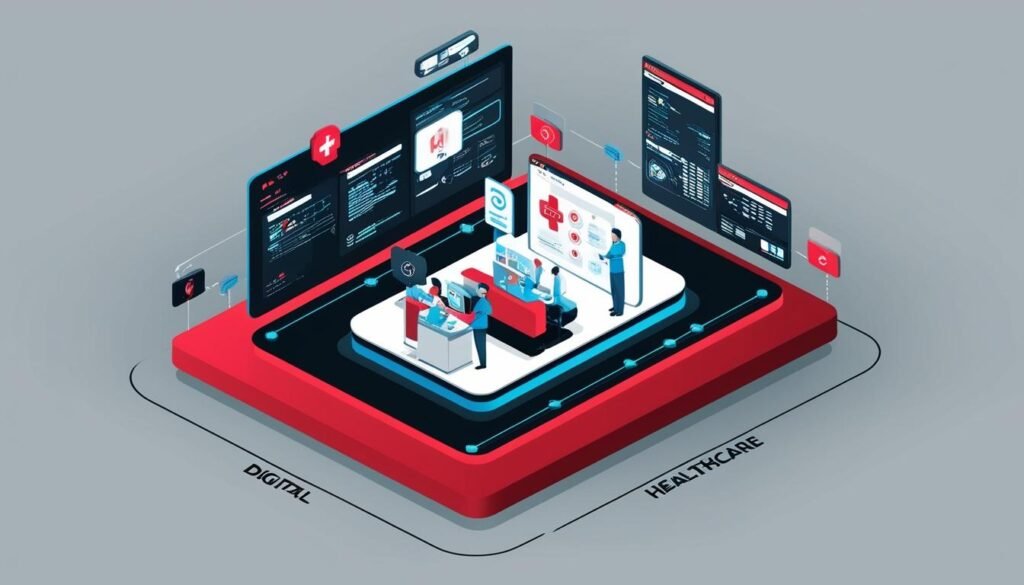Businesses are increasingly leveraging artificial intelligence to streamline operations, enhance decision-making, and improve employee satisfaction across various sectors.
In recent years, businesses across various industries have increasingly turned to artificial intelligence (AI) to automate their operations and enhance overall performance. The strategy of integrating AI technologies is proving instrumental in driving growth, streamlining processes, and improving decision-making.
One of the most prominent fields witnessing this transformation is healthcare, where the management of claims and benefits is evolving through innovative approaches. The healthcare IT landscape is undergoing a significant overhaul, with professionals like Manoj Kumar leading the charge as a Lead Business Systems Analyst. Kumar is noted for championing the advancement of employee healthcare programmes, and his contributions have led to substantial efficiencies in benefits processing.
Kumar spearheaded the development of a comprehensive digital benefits management platform that simplified the experience for employees. This initiative not only reduced the workload on HR departments by 30%, but it also halved enrollment processing times, ultimately enhancing employee satisfaction. Moreover, he automated claims processing workflows using Robotic Process Automation (RPA), which led to a 40% reduction in processing times and a 20% cut in operational costs. His integration of various HR, payroll, and healthcare systems resulted in a 25% decrease in data discrepancies, significantly enhancing compliance reporting accuracy.
In addition to process efficiencies, Kumar harnessed predictive analytics to gain insights into healthcare trends and claims behaviours. These data-driven insights allowed organisations to revise benefits provision to better align with employee needs, resulting in a 15% reduction in healthcare plan costs and an 18% annual decrease in overall healthcare expenses. His ability to analyse denial patterns and implement staff training has led to a notable reduction in claims rejection rates, alongside ensuring compliance with federal regulations such as the ACA and HIPAA.
The transformative impact of AI is not confined to healthcare; the market for AI applications in process optimization is projected to reach USD 113.1 billion by 2034, with a compound annual growth rate (CAGR) of 40.4% between 2025 and 2034. North America, with a significant 37.2% market share, is at the forefront, generating over USD 1.4 billion in revenue. The United States alone commands a sizeable portion, showcasing a robust adoption of AI technologies.
AI’s ability to streamline operations through data analytics and automation holds vast potential across industries, particularly in manufacturing, retail, and healthcare. The technology identifies inefficiencies within existing processes and optimises them, which not only results in reduced operational costs but also increases productive outputs by 10-15%. Financial benefits are notable, with companies leveraging AI reporting improvements in their Earnings Before Interest, Taxes, and Amortization (EBITA) by 4-5%.
Research indicates that AI significantly enhances response times, improving time to action by up to 90%. In manufacturing, for instance, there has been a reported 50% reduction in off-spec products, showcasing AI’s impact on both quality and resource management. As organisations increasingly seek to cut costs and improve operational effectiveness, the demand for AI-driven solutions is surging, particularly in sectors that require high precision and efficiency.
AI’s role extends to areas such as customer service, where AI-powered chatbots can provide around-the-clock assistance, improving customer engagement and freeing human staff from routine inquiries. In workforce management, AI automates talent acquisition processes, further enhancing productivity.
The potential for AI in process optimisation is not without its challenges, including issues relating to data quality, integration with existing systems, and ethical considerations. As companies strive to leverage AI’s capabilities effectively, the need for skilled personnel in AI and data science continues to grow.
Overall, the integration of AI into various business operations represents a critical opportunity for enhancing efficiency, driving growth, and improving service delivery across industries. As organisations adapt to this rapidly evolving technological landscape, the successful implementation of AI strategies may define the competitive edge for many in the foreseeable future.
Source: Noah Wire Services
- https://www.experian.com/blogs/healthcare/3-benefits-of-using-ai-for-claims-management/ – This article supports the claim that AI in healthcare claims management can reduce denials, improve accuracy, and speed up reimbursement processes. It highlights the benefits of using AI in claims processing, such as proactive identification of errors and automation of reimbursement.
- https://www.mckinsey.com/industries/healthcare/our-insights/artificial-intelligence-in-health-insurance-smart-claims-management-with-self-learning-software – This article discusses how AI can strengthen claims management in health insurance by systematically identifying and correcting errors, and how it can lead to greater efficiency and valid decisions.
- https://www.ricoh-usa.com/en/insights/articles/ai-driven-insurance-claims-management-benefits – This article explains how AI can automate claims processing workflows, mitigate fraud, and enhance the customer experience in insurance claims management, which aligns with the benefits of AI in process optimization.
- https://www.experian.com/blogs/healthcare/3-benefits-of-using-ai-for-claims-management/ – This article also mentions the use of predictive analytics to gain insights into healthcare trends and claims behaviors, which helped in revising benefits provision and reducing healthcare plan costs.
- https://www.ricoh-usa.com/en/insights/articles/ai-driven-insurance-claims-management-benefits – It supports the idea that AI can deliver a better customer experience and increase throughput and accuracy in claims management by creating ‘clean claims’.
- https://www.mckinsey.com/industries/healthcare/our-insights/artificial-intelligence-in-health-insurance-smart-claims-management-with-self-learning-software – The article highlights the economic impact of AI in claims management, such as potential savings for health insurers, which aligns with the financial benefits mentioned in the text.
- https://www.experian.com/blogs/healthcare/3-benefits-of-using-ai-for-claims-management/ – It discusses the integration of AI with existing systems, such as practice management and electronic health record software, to improve the accuracy of claims documentation.
- https://www.ricoh-usa.com/en/insights/articles/ai-driven-insurance-claims-management-benefits – The article explains how AI can automate the collection, extraction, and validation of relevant data from various documents, enhancing the efficiency and accuracy of the claims process.
- https://www.mckinsey.com/industries/healthcare/our-insights/artificial-intelligence-in-health-insurance-smart-claims-management-with-self-learning-software – It details the importance of structured procedures and digitized documentation for effective AI-supported claims management, which addresses the need for data quality and integration.
- https://www.experian.com/blogs/healthcare/3-benefits-of-using-ai-for-claims-management/ – The article mentions the use of AI to identify and correct errors before claims are submitted, which improves response times and reduces operational costs.
- https://www.ricoh-usa.com/en/insights/articles/ai-driven-insurance-claims-management-benefits – It highlights the role of AI in mitigating fraud and enhancing compliance, which are critical aspects of process optimization in various industries.
- https://news.google.com/rss/articles/CBMixAFBVV95cUxNeUFieEFkMVNvNlA2NG9YMS1aSENEVy1pcVBhcnl4QUhjblhUMXpzeVRSSTBhbklkakhScHBNcURjZ2xLWV9GRVQ4alRCZ0tIUUxfaGFfd1JuYjJIbDhyQl9PQ0ZRbTlWOTVULTBybjlBcDdCLThkZC16VzhicHpaUFJaQVczS3pQVVhDam96dVRnaEVlbFVZYjhhSVNIZWVFWEtGYWJ2RWR6WEZVYVNMSjBVeWR2NXRrdjRSdlZyZGRBMTVm?oc=5&hl=en-US&gl=US&ceid=US:en – Please view link – unable to able to access data















